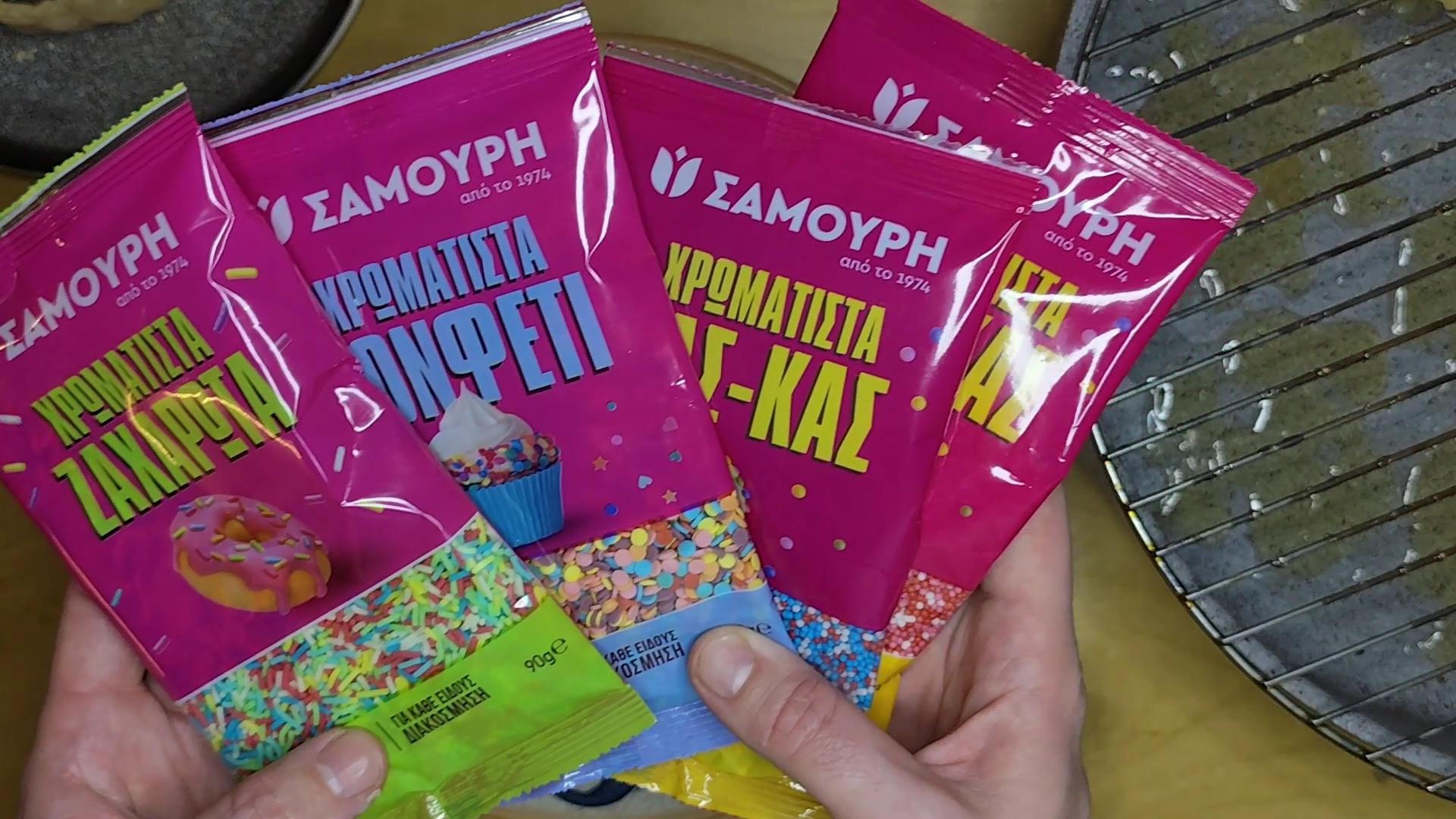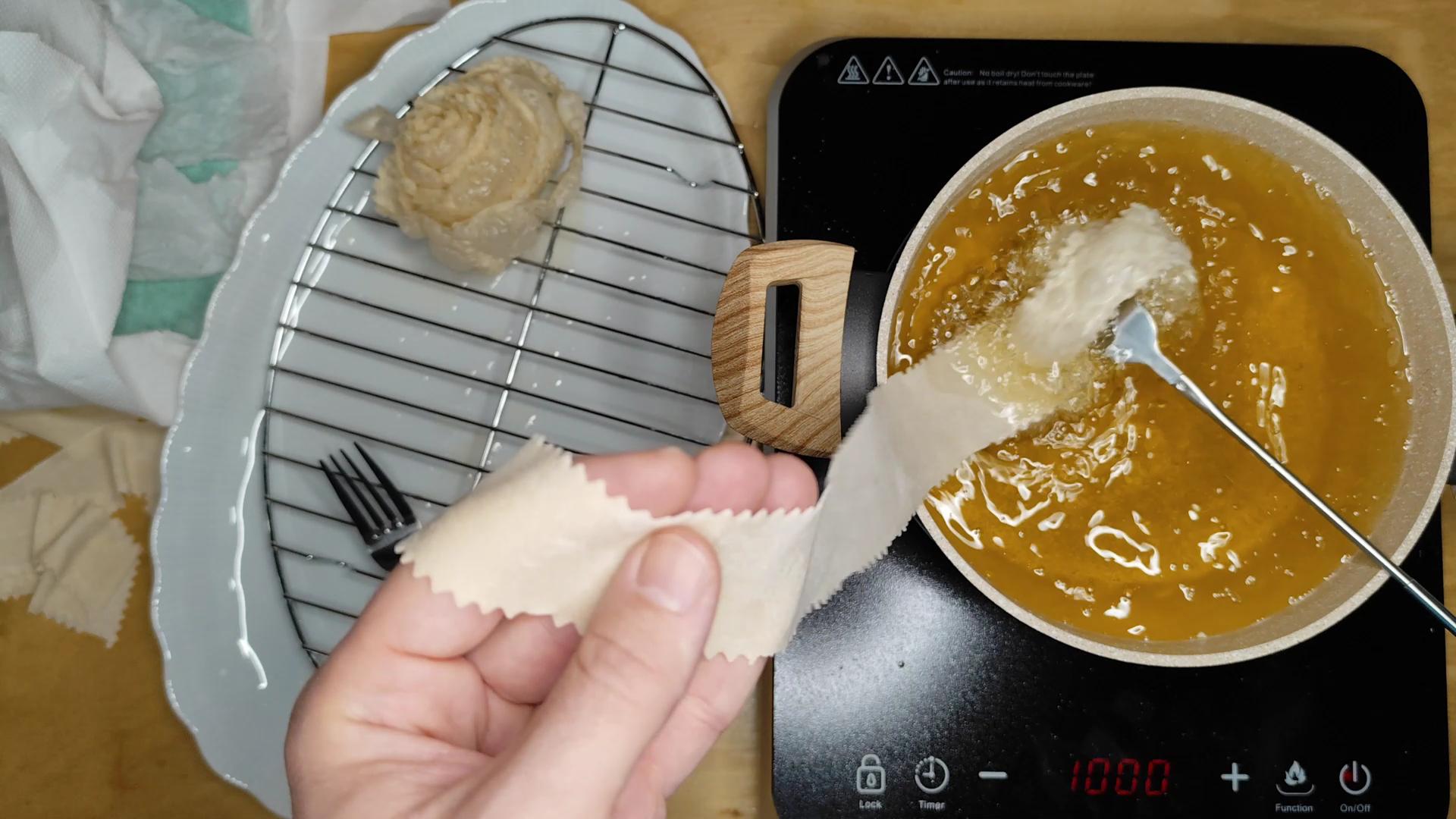
"kserotigana"
Traditional Fried Honey Pastries
from Chania



For approximately 12 piece
Approximately 95 cm of dough, or divide the dough into three pieces
Ingredients:
For the dough:
225 g all-purpose flour
20 g tsikoudia (a traditional Cretan alcoholic drink made from grape pomace)
90 g water
2 g salt
Extra flour for rolling out the dough
For frying:
1 kg sunflower oil
For the syrup*:
1 kg sugar
1 kg water
Juice of one medium-sized lemon, approximately 40–50 g
170 g thyme honey
For the topping:
A few sesame seeds
Instructions:
In a bowl, we add the 200 g flour, the salt and the tsikoudia.
Mixing with a fork, we add the water.
When the dough starts to firm up, we continue kneading by hand.
Little by little, and kneading very well, we add the remaining 25 g of flour until it becomes a
firm dough.
We need to be careful. We want a very firm dough.
Depending on the moisture content of the flour, we may need to add more or less flour. The dough should be firm.
Then, we take a pasta machine and start at the first setting (0), passing the dough through until it becomes smooth and uniform.
At this stage, we don't add extra flour.
Unless we notice the dough is too sticky.
We continue with the next setting (2), adding flour to both sides.
We do the same with the next settings (4, 6, and 8).
When we reach the final setting, we don't add any more flour.
We cut it with a dough cutter.
We transfer it to the side and then take the cutter again. First, we cut it in half lengthwise and continue cutting so that four fried honey pastries are made from each sheet.
We spread them out next to each other in a crinkled manner without them touching each other, and cover them with a paper towel, a damp baking paper that has been wrung out from excess water, and a cloth.
This is important, because, if they dry out, they won't puff up during frying.
We prepare the oil, which must have a stable medium temperature.
The very hot oil creates many bubbles on the dough, but there is a risk of them getting burned.
However, very low temperature does not create any bubbles on the dough.
We won't need to use all the oil, but the pastry must be fully immersed in it, so we need to make sure the container we're using is filled.
If we make large quantities, we add oil every time it gets low, always allowing time for the temperature to rise.
Also, if the oil is used for many fried honey pastries, when we notice them turning golden brown, the oil needs to be completely replaced.
There are forks on the market with an extension mechanism. We will need one as a precaution to avoid burning our hand.
We have a baking tray with a rack or a platter next to the oil.
We start by placing a small piece of dough into the oil. If the oil is ready, the dough will rise to the surface and start forming bubbles.
We take the large fork and pass the dough through the middle tines and fold it once.
We dip it into the oil and start wrapping it around the fork, dipping it each time just enough for the dough to fry.
At the edge of the dough, we press it against the container so that the edge sticks to the fried honey pastry and, using a second fork, we fully dip it into the oil for a few seconds and transfer it to a rack to drain the excess oil.
We repeat the process for the rest of the pieces.
If the dough doesn't stay on the fork, we repeat the process while keeping it pressed against the edge of the container. We let them drain the oil well for about an hour.
For the syrup, we add all the ingredients except for the honey and bring them to a boil for approximately 25 minutes until a little more than half of the syrup remains. (I used a total of 2040 g, and 1340 g remained).
When it's ready, we add the honey and let it come to a boil for a little while. We need to be careful because it foams up and may spill over.
We lower the heat and dip the fried honey pastries one by one making sure they are well soaked in syrup.
With a ladle, we transfer them to a tray with a rack for a few seconds for the extra syrup to drain.
We transfer them to a platter and sprinkle them with roasted sesame seeds. We store the remaining syrup in the fridge for future use. Fried honey pastries, when not syruped and kept in a dry place, last for several days. The syruped ones last for about 3 to 4 days depending on the place we have kept them.
For a christening, if we want, we can use colorful Jordan almonds.
For a memorial, we use roasted and ground almonds and roasted and ground walnuts instead of sesame seeds. We also add cinnamon and cloves.










